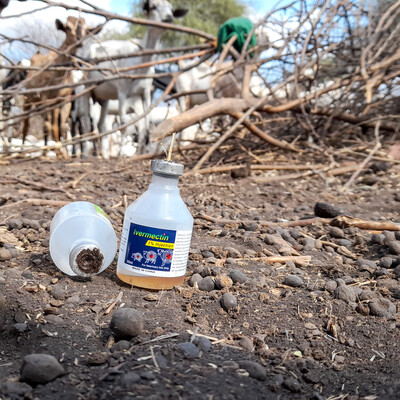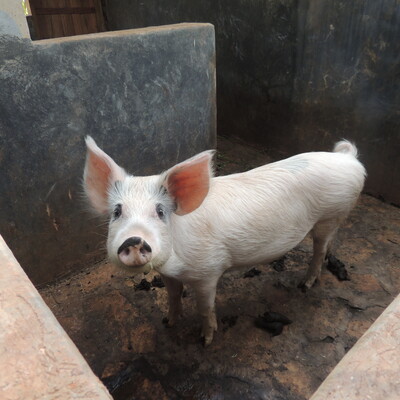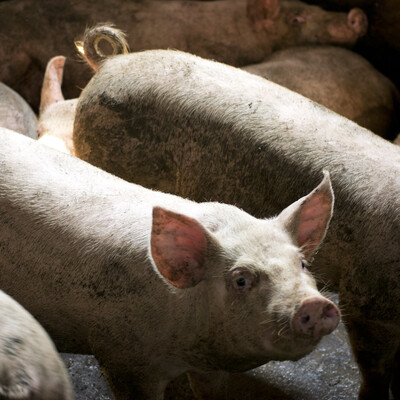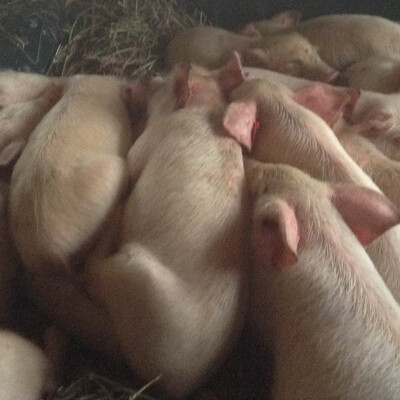
Grass roots vaccination campaigns support rabies eradication in Kenya

Rabies vaccination campaign in Laikipia (photo credit: Laikipia Wildlife Forum).
Today we celebrate the World Zoonoses Day. To raise awareness about the risks of zoonotic disease, a recent study by scientists from a cohort of institutes including the International Livestock Research Institute (ILRI) shows the value of grass roots vaccination campaigns against rabies, a zoonotic disease, which is transmitted from animals to humans and caused by the rabies virus.
Over a period of three years (2015, 2016 and 2017) the Laikipia Rabies Vaccination Campaign (LRVC), vaccinated 13,155 dogs from various pastoral communities in Kenya’s Laikipia County. The initiative, which takes place annually, has grown from a local volunteer-effort to a large-scale program that is attempting to eliminate rabies at the landscape scale.
Even though rabies is spread by dogs, bats, skunks and foxes; domestic dogs are the common reservoir of this virus. The disease kills nearly 59,000 people around the world annually and 99% of these deaths are caused by dog-mediated rabies. Symptoms of rabies include fever, headaches, salivation, muscle spasms, paralysis and mental confusion. The disease is, however, a 100% vaccine preventable neglected tropical disease.
In 2016, World Health Organization (WHO), the World Organisation for Animal Health (OIE), the Food and Agriculture Organization of the United Nations (FAO), and the Global Alliance for Rabies Control released a global framework for the elimination of dog-mediated human rabies to guide the elimination efforts of this disease by 2030.
While the rabies elimination strategy highlights five key components, some of the strategy’s critical success factors include long-term political and social commitment, community engagement and awareness about rabies, sustainable vaccination of 70% of at-risk dog populations, reaching remote and rural at-risk populations, promotion of vaccine banks, and maintaining trained and motivated personnel.
Significant challenges exist in sub-Saharan Africa where vaccination efforts and large-scale campaigns, which focus on rural areas, often have mixed results. This is largely because mass vaccinations of domestic dogs requires significant resources and adequate planning and implementation time. In Kenya, the National Rabies Elimination Coordination Committee oversees efforts to eliminate dog-mediated rabies. It is coordinated by the Zoonotic Disease Unit (ZDU) and the ministries of health, and agriculture livestock and fisheries.
Dishon Muloi, postdoctoral fellow at ILRI and a co-author of the paper from the study, which looked at the development, implementation and effectiveness of grass roots mass dog rabies vaccination campaign, said that ‘by strengthening and expanding grass roots vaccination campaigns, such as LRVC, and continually raising awareness and educating communities on rabies control, we can continue to move towards a goal of zero human deaths from dog transmitted rabies by 2030.’
Eric Fevre, professor of veterinary infectious diseases at the University of Liverpool and joint appointed principal scientist at ILRI said, ‘this was an animal health intervention with important public health outcomes. While significant progress has been made with the LRVC with more and more dogs vaccinated each year and in achieving direct benefits to the broader community; it is clear that to achieve a 70% coverage of domestic dogs, community mobilization is only one piece of a complex puzzle.’
This study was funded by a range of donors including the CGIAR A4NH Program and scientists from a cohort of institutes that included the Field Museum; the Smithsonian Conservation Biology Institute; the University of Edinburgh; ILRI; the Karatina University, the Maasai Mara University; the Kenya Agricultural and Livestock Research Organization (KALRO); the Kenya Zoonotic Disease Unit; the Washington State University; the Zoological Society of London; the Ministry of Agriculture, Livestock, and Fisheries; the County Government of Laikipia; the University of Liverpool and the Mpala Research Centre.
Download the full study here
Read about the earlier work done in Laikipia county on rabies here
Learn more about ILRI’s work on zoonotic disease


















